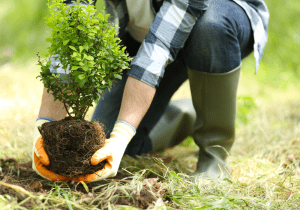Creating your dream outdoor space begins with understanding the fundamental principles of landscape design and how each element contributes to the overall aesthetics and functionality of your yard. Whether you’re starting from scratch or planning to revamp your existing garden, here’s a straightforward guide to help you craft a beautiful and sustainable landscape.
Understanding Landscape Design
Landscape design is more than just planting a few shrubs and flowers; it’s about creating a cohesive environment that reflects your personal style and meets your outdoor living needs. The process involves several key elements:
- Planning Your Space: Start by assessing your current landscape. Consider factors such as the size of your yard, the type of soil, prevailing weather conditions, and how much maintenance you are willing to undertake. Planning helps in making informed decisions about plant selection and placement.
- Design Principles: Balance, proportion, and unity are crucial in landscape design. Balance can be achieved symmetrically or asymmetrically, depending on your style preference. Proportion involves scaling your garden elements relative to each other, while unity refers to the harmony between various components in your landscape.
Incorporating Trees: The Role of an Arborist
Trees are essential components of landscape design, offering aesthetic appeal, shade, and environmental benefits. Consulting with a professional arborist, like those at Brockley Tree, can greatly enhance your design. Arborists provide valuable insights on:
- Tree Selection: Choosing the right trees for your landscape is crucial. Arborists can recommend species that thrive in your local climate and soil conditions, align with your design aesthetics, and fit the scale of your space.
- Tree Health and Safety: Regular assessments by an arborist ensure your trees remain healthy and safe. They can diagnose and treat diseases or pest infestations, and advise on proper tree care techniques.
- Strategic Placement: Arborists can guide you on the strategic placement of trees to achieve specific design goals, such as enhancing privacy, framing views, or creating windbreaks.
Practical Tips for Design Execution
Once you have a plan and understand the elements of design, you can start implementing your landscape project:
- Layering Plantings: Use a variety of plants at different heights to create depth and interest. Start with trees and tall shrubs at the back, followed by medium-sized plants, and ground cover or low-growing plants at the front.
- Focal Points and Pathways: Establish focal points in your garden, such as a unique tree, a sculpture, or a water feature. Design pathways to lead the eye and foot traffic around the space, enhancing the overall flow and usability of your garden.
- Seasonal Considerations: Select plants that will provide visual interest throughout the year. This includes spring blossoms, summer greenery, autumn foliage, and even interesting bark patterns in winter.
Maintaining Your Landscape
A beautiful landscape requires ongoing maintenance. Here are some tips to keep your garden thriving:
- Regular Pruning: Trees and shrubs need regular pruning to maintain their shape and health. This also prevents them from overgrowing and overshadowing other plants.
- Soil Health: Keep the soil healthy by adding organic matter and ensuring proper drainage. This will support plant growth and reduce the likelihood of disease.
- Irrigation: Efficient watering practices save water and ensure plants receive the moisture they need. Drip irrigation systems are an excellent investment for keeping your plants hydrated efficiently.

